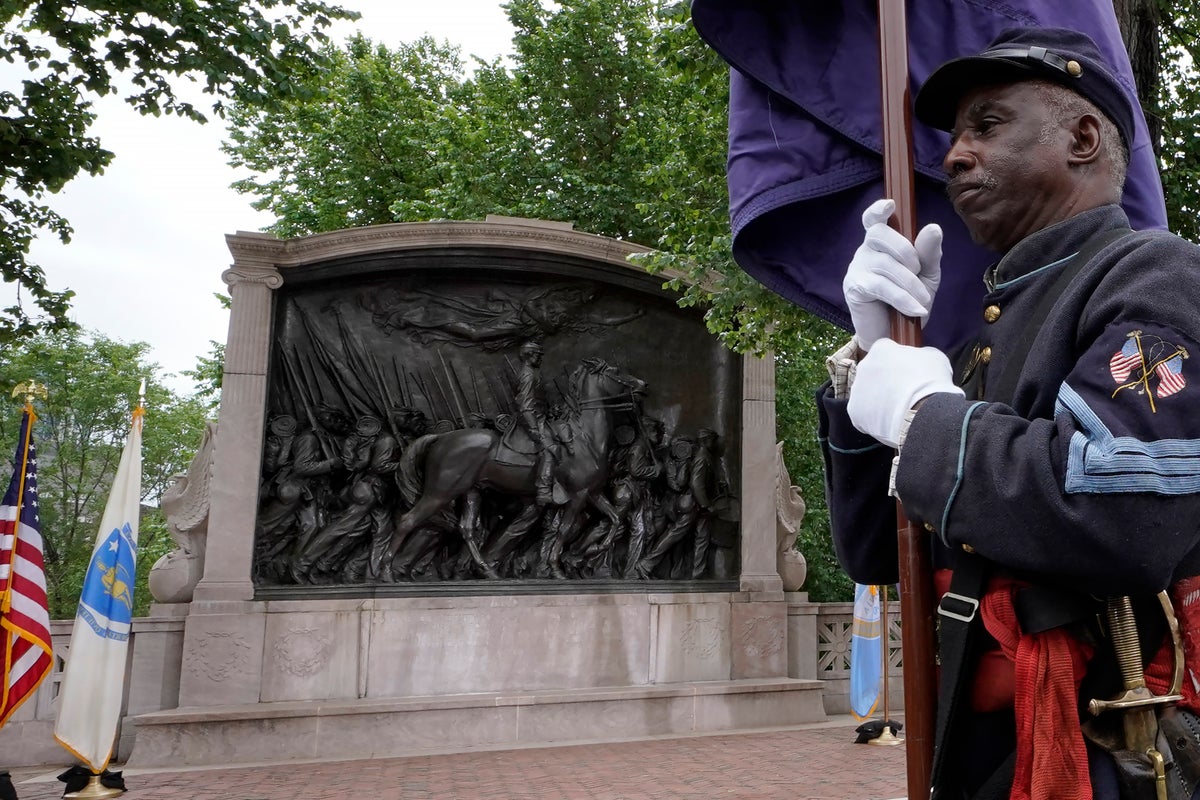
A Boston memorial to a famed Civil War unit made up of Black soldiers was rededicated Wednesday after a three-year long restoration with a ceremony filled with song and somber reflection.
The Robert Gould Shaw and the Massachusetts 54th Regiment Memorial — considered the nation’s first honoring Black soldiers — underscores how ending slavery was not just about one man, but many, said Dr. Ibram X. Kendi in his remarks.
“The Black soldiers of the 54th were as much the great emancipators as Abraham Lincoln,” the author of “How to Be an Antiracist” and founder of Boston University’s Center for Antiracist Research said. “The 54th are a testament to ‘We freed us.’ There wasn’t a single person that abolished slavery. It was something we did together.”
Dr. David Blight, a Yale history professor, said the memorial is considered the country’s greatest work of public art not just because of its beauty but also because of the message it tells.
He pointed to the memorial’s Latin inscription, which he said is translated: “He gave up everything to serve the Republic.”
“We have a Republic today in trouble. We have a democracy in great peril,” Blight said. “What are we giving up for the Republic?”
The towering bronze relief by American sculptor Augustus Saint-Gaudens captures the stirring call to arms answered by Black soldiers who served in the unit, which was popularized in the 1989 Oscar-winning movie “Glory.”
The unit’s heroism during its failed assault on Fort Wagner in South Carolina inspired tens of thousands of Black men and others to sign up for the Union Army, helping turn the tide of the war.
Blight, in his remarks, also acknowledged the memorial’s place in the broader debate over the removal of Civil War monuments lionizing the Confederacy.
“This monument has always been here for more than 100 years saying that the Confederacy did not win that war,” he said. “This monument tells a story like no other monument about that war. It says African Americans had to die to be counted as people, and from that the American Republic can be reinvented and reimagined.”
While prominent Black Bostonians championed the creation of the monument in the aftermath of the Civil War, the Shaw memorial still didn't escape scrutiny amid a national reckoning on racism sparked by the killing of George Floyd by Minneapolis police in 2020.
The memorial depicts Shaw, the unit’s white commanding officer, riding on horseback while his Black soldiers walk in the background — a visual that some find problematic.
The memorial reopened last May following a $3 million restoration that involved careful restoration of the bronze relief, shoring up the monument’s brick plaza and concrete foundation and adding a stainless steel frame between the bronze and the marble structure that surrounds it.
The work was initially planned to take less than half a year, but due to the coronavirus pandemic and other factors, ended up taking more time.







